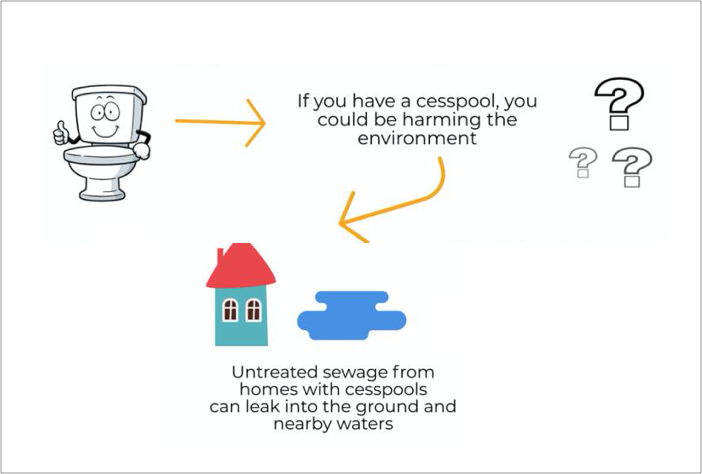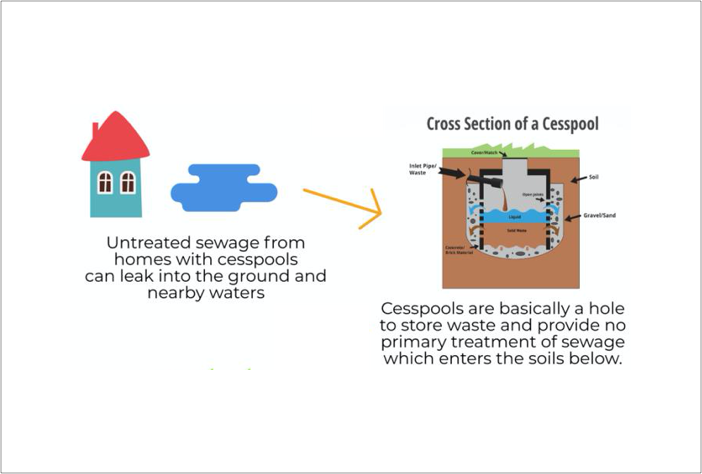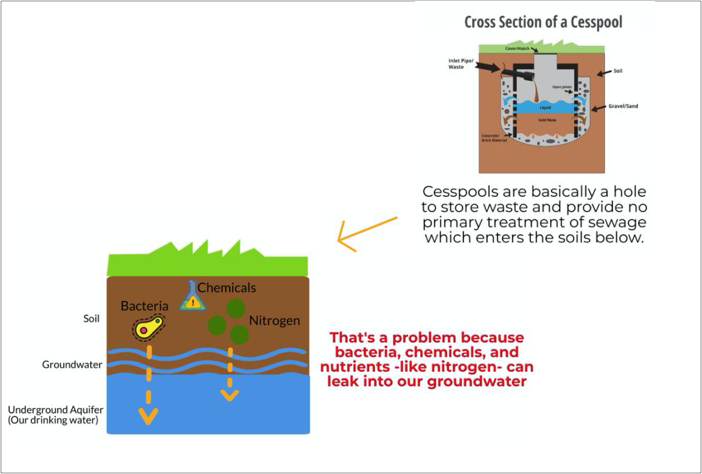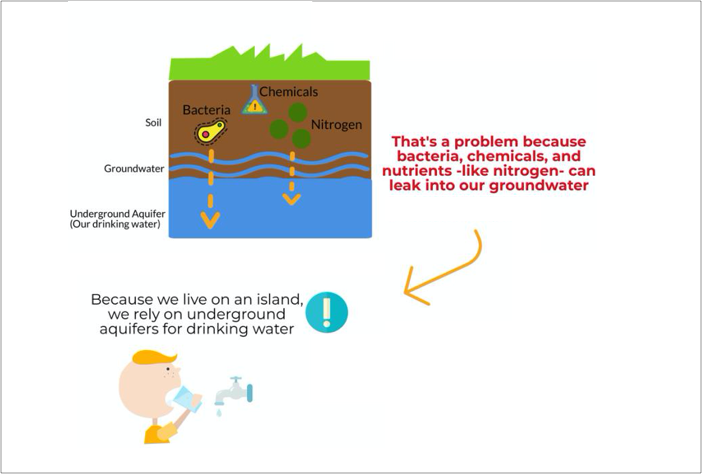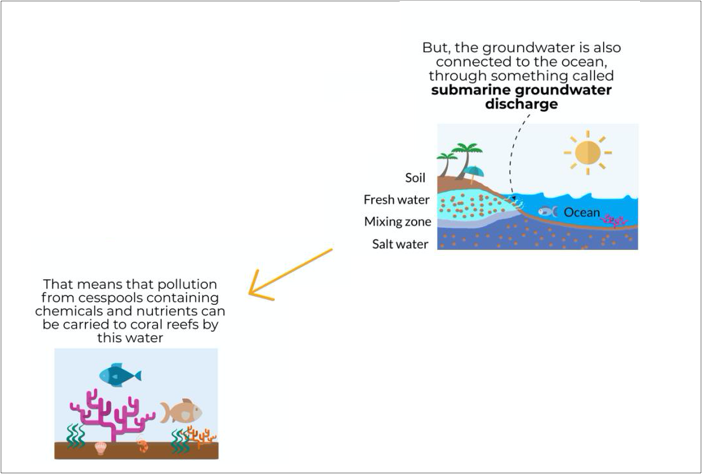-
Septic Tank Wastewater Reclamation Facility By The Numbers
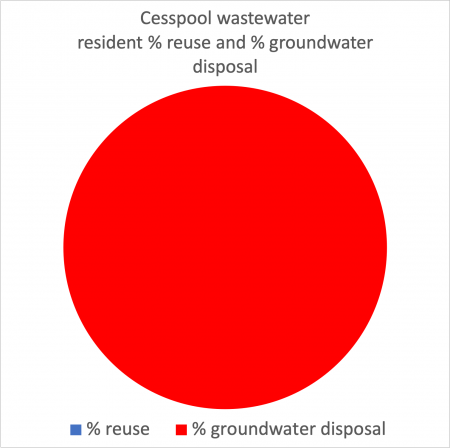
100% of resident wastewater is discharged into groundwater for residents using cesspool disposal.
Cesspool Disposal Flow and Nutrient Summary
Ave. septic flow/resident (gallons/year) Ave. septic flow/resident (gallons/day) injected TN concentration (mg/L) injected TP concentration (mg/L) Total leach nutrients / resident / year (lbs/year) 37,261 102 < 90 < 20 < 34 The estimated yearly discharge per resident into cesspools is about 37K gallons or about 100 gallons per day. Total Nitrogen is estimated to be less than 90 mg/L and Total Phosphorous less than 20 mg/L. Hawaii Department of Health
estimates of cesspool effluent water quality can be found here.
Cesspool Disposal Coliform Cell Counts per Resident
coliform cell counts (MPN/100mL) total coliform cell counts / resident (MPN/year) < 100,000,000 < 141,047,621,543,996 Fecal coliform Most Probable Number of colony forming (infection forming) units in cesspool effluent is estimated to be less than 100 Million MPN. Total injected fecal coliform colony forming units per resident is estimated to be less than 141 Trillion cells per year. Hawaii Department of Health estimates of cesspool effluent water quality can be found here.

